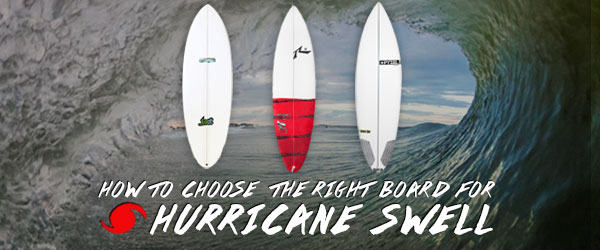
You’ve spent all Summer creating speed and looking for boards that help you create even more speed. Now that Fall/Winter is right around the corner and hurricane swell season is on our doorstep, it’s time to talk about boards that CONTROL speed.
There’s a big shift in what you need your board to do when you move from Summer dribble to pumping overhead tubes. The biggest difference is the added power/speed your board creates (or doesn’t) as well as how it handles high speeds and steep/late drops. In Summer dribble, you are looking for as much added speed as possible, so this means flatter rockers, wider widths and larger tail blocks. All of these add power and speed to a wave that doesn’t have much of its own.
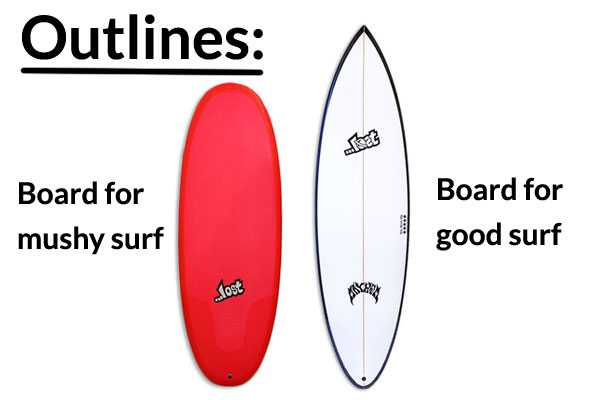
When you shift to good surf, you don’t need to create as much speed, you actually need the board to be more “neutral” and control the speed rather than create it. This is where you will see more rocker, more foiled out rails, narrower widths and a smaller tail block. All of these tweaks allow the board to sit down in the water at higher speeds and remain in control.
This is all well and good, if you can even catch the wave, and this is where step ups shine above standard “go to” boards with their extra paddle power. There’s nothing worse than staring into a perfect barreling wave that you can’t get to….all day long. Swift moving currents and large, open playing fields mean lower to no wave count for boards that can’t paddle out of their own way.
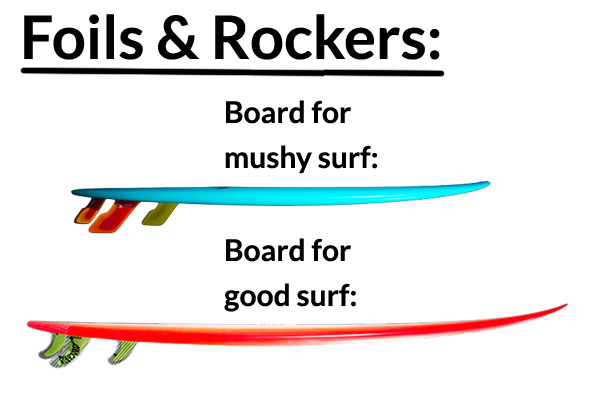
Today we took a walk through the REAL Boardloft, picking out some notable boards that fit these descriptions. It’s fun doing this because every time you hold one of these boards you can envision the waves it’s going to excel in, and for once, it’s not knee to waist high! If you have any questions about any of these boards, feel free to shoot us an email or call us at the shop. These boards are all available for immediate shipment to anywhere in the world. Express shipment is also available when that last minute hurricane swell has you frothing….
Shortboards for Pumping Surf:
Pyzel Bastard and the Channel Islands Rook 15: These aren’t exactly step ups, but they are good wave shortboards. More rocker, narrower widths, foiled rails and smaller tail blocks keep these boards in the water and able to be aggressively surfed when conditions are pumping. John John Florence used his Pyzel Bastard to win the WSL France event last year as well as surfing it in “small” Teahupoo. Adriano De Souza used his Rook 15 in pumping Margaret River to take him to the podium. These are great “go-to” boards for pumping waves, and for surfers who don’t need a ton of extra length in their boards, just modified shapes to handle the conditions.
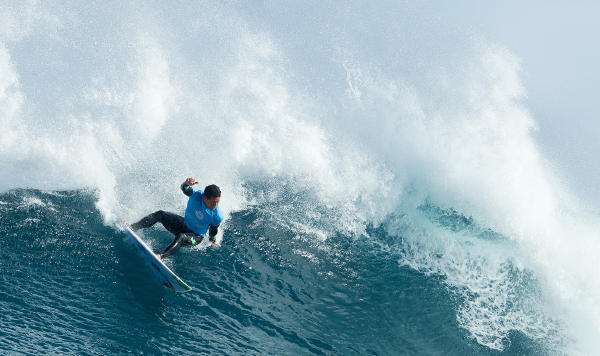
Foiled Hybrids
These boards are close to daily driver hybrids, with the chunky edges taken off and a bit of rocker added. You can still use them when the swell hasn’t arrived yet, but they tend to excel in waves stomach high and above. Boards that come to mind are the Roberts Meat Cleaver, Pyzel Nugget, …Lost Mini Driver, Vernor Silver Bullet 2 and Rusty Rooster. These are all great “single board quivers” for surfers looking to keep their gear to a minimum. They also work well placed above a groveler for a two and done quiver.
The Roberts Meat Cleaver has been on fire and is one of our best selling shortboards in the loft. When you look at the Meat Cleaver, it looks as perfect as you could ever hope for in a do everything hybrid. When you start off with the proven Roberts White Diamond 2 and then modify it for better surf, it’s a formula that works.
The Rusty Rooster also fits well into this category. The wider nose and flatter rocker help you scrape into tons of set waves and beat the current. Once you’re on them, the added tail rocker and control provided by the Venturi bottom keeps the board locked in and confident during high speed turns and barrels.
The …Lost Mini Driver probably has the highest number of boards out there on the water and the highest stoke factor, as most people really like this board and have epic session stories using one. Easiest way to describe it, is that it’s Lost Rocket’ish, but with a reverse rocker (more nose rocker/less tail rocker), more foiled rails, with a rounded pintail. The rocker pattern favors back footed surfers.
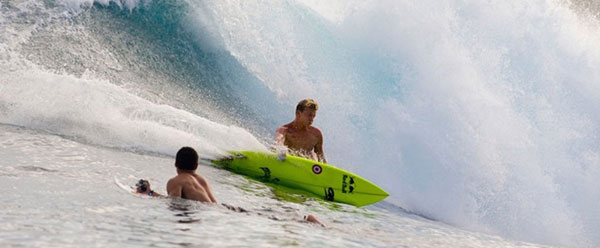
The Vernor Silver Bullet 2 looks like a Lost Rocket from across the room, but has 100% Vernor rails and bottom shape to give it its own distinctive feel and performance. For all the Vernor Mini Simmons diehards out there, this is your go to step up when the Mini Simmons reaches its limits.
Last but not least is the Pyzel Nugget. Think of it as a fuller Pyzel Short Cut or a skinny Pyzel Rat Skull, as you can take it well into the range of both of those boards. The Nugget is a good go to board for almost anything, and the added paddle power of the flat/full forward sections of the board help you scrape into some serious set waves with it.
Compact Step-Ups:
The Lost Round Up, Lost Rock Up, Roberts Dream Catcher, Pyzel Short Cut, Rusty Slayer, Maurice Cole Protow and Rawson Sniper: These are “compact step ups” that have the paddle power of boards much longer, compacted into a shorter package that fit into many waves and people’s quiver better. These boards work well for surfers used to shorter hybrid shapes, wanting a step up with a similar feel.
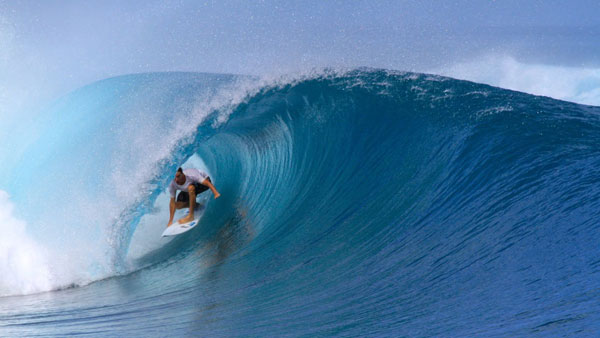
The Lost Rock Up basically invented this category and is the board with the most proven track record. The Rock Up has a great feel in surf chest high and above and loves top end speed and bigger surf. The The Lost Round Up came about by popular demand for a board that was a bit more playful on the open face than the Rock Up, but still held in confidently in powerful surf and tubes. Basically, you give up a bit of upper end for more mid range. They look really similar and often times their basic dimensions are exactly the same. What differs are the width of the tail and the foiling of the rails, where the Round Up has more foam and a curvier tail to carry it through open face turns with more speed.
The Roberts Dream Catcher is a wave catching machine, with ego boosting paddle power and solid hold in tubing waves. Much like the Lost Rock Up, it’s not the loosest of the bunch, but it does catch the biggest waves, and rack up insane wave count in sessions of the year.
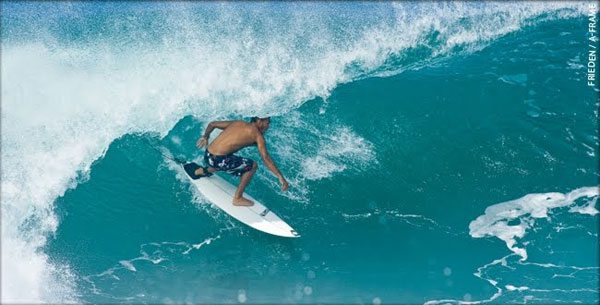
The Pyzel Short Cut is based off Pyzel’s Next Step, with 4” cut off the length. This board works really well on East Coast waves like the Cape Hatteras Lighthouse, all the way to bombing Teahupoo where many WSL Pyzel riders including Jadson Andre are using it as their weapon of choice.
The Rusty Slayer is also a proven OG in this category with Josh Kerr using his Slayers at Cloudbreak, Restaurants and Teahupoo. The Rusty Slayer is super smooth and has solid paddle power. We’ve used this board for numerous bigger wave sessions here on the Outer Banks and have nothing but the best things to say about it.
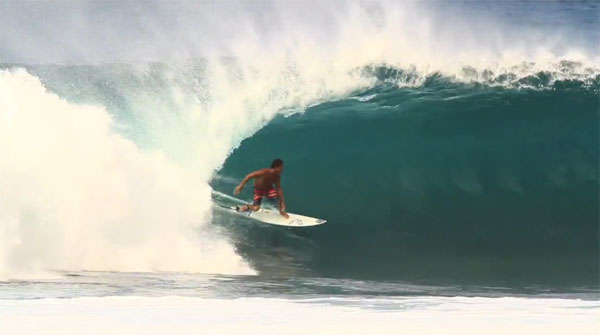
The Maurice Cole Protow is a drivey, wicked fast step up that offers incredible hold via its nose to tail sharp rails and concave bottom. Also unique to this board is the concentrated volume distribution under the chest with noticeably thinner rails and tail. This board has gears and acceleration that other boards don’t and is one of Maurice’s most sought after shapes.
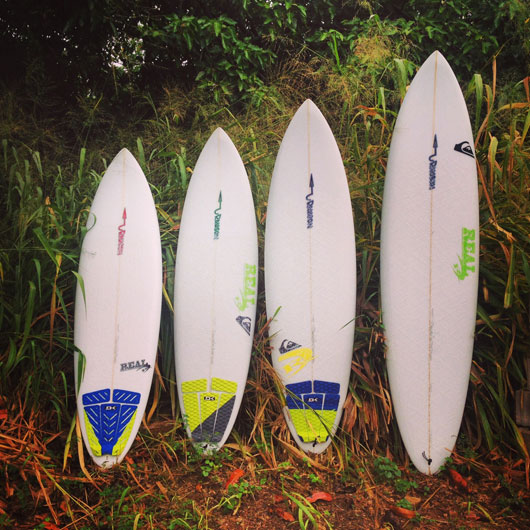
New to the Rawson lineup this year, the Rawson Sniper has already proven itself all over Hawaii, the East Coast, Central America and Puerto Rico. The Sniper has a smooth foil to it and Rawson’s timeless rounded pintail shape that instills confidence in chargers around the world.
Domesticated Step-Ups
This is a new category of boards, drawing off the popularity of boards like the Lost RV and LayZboy. These two boards have revolutionized how a growing number of surfers look at shorter boards and the fun factor they can give you in every day surf. It only makes sense to use these designs as a baseline to create a similar feeling board for bigger surf. The Lost Stretch RV and E-Z Up (aka LayZboy Step Up) pull quite a bit of DNA from their relatives to create an easy and FUN board to surf in better/bigger waves.
These “domesticated step ups” look similar to their forefathers at a distance, but both have added rocker, more foiled foam flow, thinner noses and narrower tails when compare to the original domesticated daily drivers. These board work in bigger surf, which should be expected. The surprise is how well they work in completely average surf too. If you are ready to build a shrine around your LayZboy or RV, these are the two step ups you should be looking at when moving into bigger surf.
Outside Chargers
This section of boards is for surfers willing to charge the outer bars and reefs. Yes… they’re longer than your standard 6’0 shortboard, ..a lot longer. That’s because you’ll be covering a lot more ground on them, paddling a lot further, needing to paddle a lot faster and beating a lot more current. These boards will always feel “big” surfing them on the inside sandbars and reefs, but once you take them outside, and then even outside of that, that’s when they come into their own with incredible paddle power, smooth confident turns at ridiculously high speeds, plus added strength for when the lip lands on them. Introducing the Rusty Blackbird and the Roberts OB Pin.
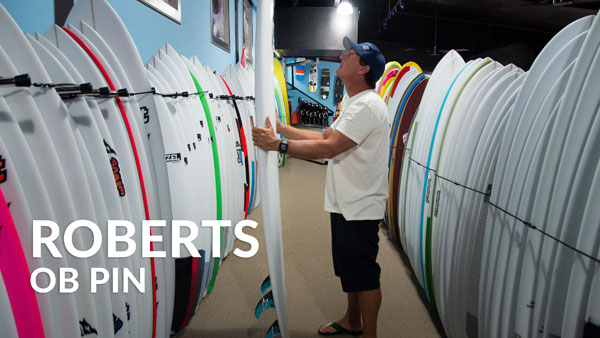
The Rusty Blackbird is designed for fast moving water, wide-open playing fields and waves that require solid paddle power and a board that can cover a lot of ground on each turn. Originally designed for waves like Cloudbreak in Fiji and Ocean Beach, California, the Blackbird packs maximum paddle power and speed handling capabilities into a board that can still be duck dived, since some of these waves do not have channels to paddle out through. When your Rusty Slayer isn’t enough board, this is when you switch over to the Blackbird. The Slayer, being designed as a compact step up, likes tighter, boxier waves, where the Blackbird lusts after larger, fast moving, large canvas waves. The ability to cover significant distances both when paddling and carving, come easily to the Blackbird.
The Roberts OB Pin is based on several years of collaborating with Robert Weiner building custom boards for our customers surfing Ocean Beach in California, as well as big surf in Mexico, Fiji, Hawaii and Puerto Rico. The OB Pins are typically another step up from “most” Rusty Blackbirds, although Blackbirds in the 8’0+ range aren’t unheard of either. The Roberts OB Pin gives the surfer incredible open water paddle power, delivered in a control oriented package with a narrowed down nose template, narrower pintail, subtle bottom shape for less lift and added rocker. All of these characteristics keep the OB Pin glued to the water during LONG high-speed drops.
Both the Roberts OB Pin and the Rusty Blackbird feature beefed up stringers and glass schedules to keep them together when most boards would snap like toothpicks. They can be used for swell of the year, outside breaks and make good big wave travel boards for destinations that have always been on your bucket list.
One – Two Punch
There are a good number of surfers out there that have 2 boards: A longboard for most days and a “better wave board” for when the surf’s lit up. This better wave board is typically 6’6 up to 8’0 long. For these surfers, it’s not about the hack of the day or landing an air, it’s about wave count and making the most of their precious sessions. While there’s plenty to get excited about with today’s longboards, the “better wave board” that compliments a longboard (and its surfer) has been a category that has needed a good jolt of modernization.
The Ricky Carroll TMM is new for this year and is already one of Ricky’s most popular boards ever. The TMM fits the bill perfectly for this two board quiver and even Ricky himself travels the world with only two boards: his trusty 9’0 PLB and his 7’0 TMM. The TMM can handle anything from crumbly thigh high wind swell to well overhead bombing outer bars. The wide point forward design puts a solid dose of foam under your chest for added paddle power. The TMM can be ridden with a variety of fin set ups to dial into your preferences and local waves. In the past there were just super sized shortboards and the random plastic pop outs. The new Ricky Carroll TMM puts a mega dose of adrenaline into a board category that had all but fallen asleep. Well needed and incredibly well received.
Long and Strong
You may not think longboards have their place in a bigger wave write up, but the fact is that the right longboard is a very functional board in larger surf, as long as it’s not sucking out below sea level. Additionally, if you solely ride longboards, the last thing you should do is switch to a “shortboard” when the waves are firing. You’re far better off sticking with the type of board you’re most familiar with and then just tweaking the design for better waves.
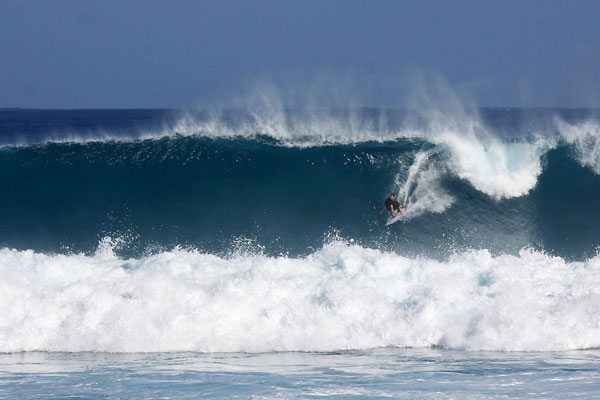
The Ricky Carroll PLB is a great all around high performance longboard with a serious yearning for bigger surf when the swell map lights up. Talk to anyone that owns one of these boards and they will tell you how many epic bigger wave sessions they’ve had on theirs when most shortboards couldn’t reach the peak or paddle into the size.
The Takayama DT2 retains the noseriding performance that Donald Takayama is known for, but blends it into a much more foiled out shape with thinner rails, a narrower nose and a more rockered out, rounded pintail. All of these tweaks create a great all around high performance longboard that can noseride, even in solid surf, as well as gouging into high performance longboard turns off the tail at high speeds in bigger surf.
Which step up is right for you?
As you can see from reading this article, surfboards have evolved and so have their step up quiver builders. When choosing a step up, honestly think about the waves you will actually be surfing in, as well as where you may be traveling to in the short term where you can use the same board. This will help you pick the right board and size that compliments the rest of your quiver and gets you tons of good waves during that next epic swell.
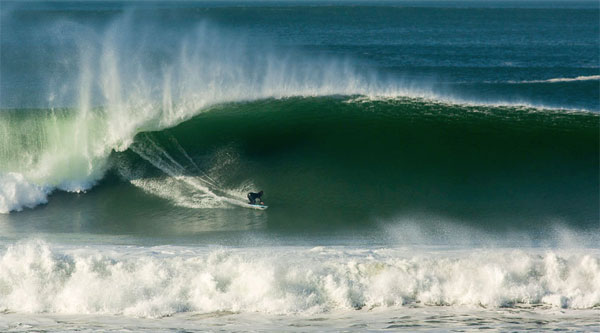
Want help picking out your next surfboard? Contact the REAL Pros or give us a call at 252-987-6000, we’re standing by to answer your questions and get your quiver ready for swell season.

